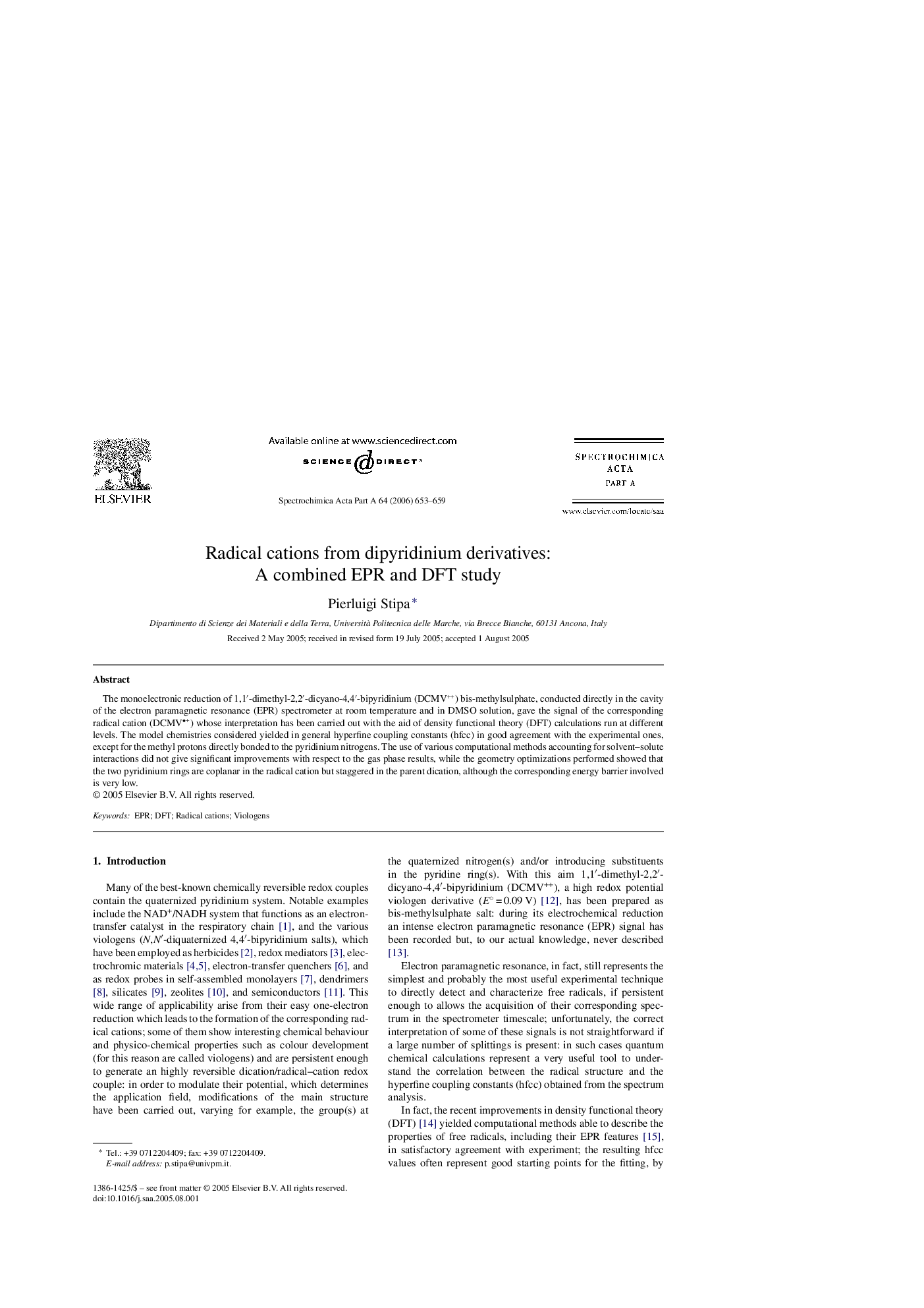| کد مقاله | کد نشریه | سال انتشار | مقاله انگلیسی | نسخه تمام متن |
|---|---|---|---|---|
| 1236428 | 968869 | 2006 | 7 صفحه PDF | دانلود رایگان |

The monoelectronic reduction of 1,1′-dimethyl-2,2′-dicyano-4,4′-bipyridinium (DCMV++) bis-methylsulphate, conducted directly in the cavity of the electron paramagnetic resonance (EPR) spectrometer at room temperature and in DMSO solution, gave the signal of the corresponding radical cation (DCMV+) whose interpretation has been carried out with the aid of density functional theory (DFT) calculations run at different levels. The model chemistries considered yielded in general hyperfine coupling constants (hfcc) in good agreement with the experimental ones, except for the methyl protons directly bonded to the pyridinium nitrogens. The use of various computational methods accounting for solvent–solute interactions did not give significant improvements with respect to the gas phase results, while the geometry optimizations performed showed that the two pyridinium rings are coplanar in the radical cation but staggered in the parent dication, although the corresponding energy barrier involved is very low.
Journal: Spectrochimica Acta Part A: Molecular and Biomolecular Spectroscopy - Volume 64, Issue 3, June 2006, Pages 653–659